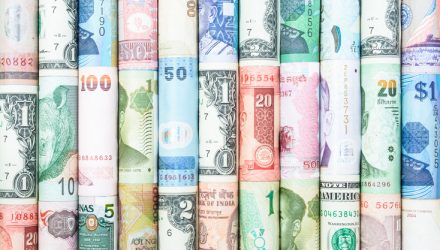For years, international ETFs were either currency hedged or they weren’t. There wasn’t a middle ground. That change a few years ago with the advent of ETFs such as the IQ 50 Percent Hedged FTSE International ETF (NYSEArca: HFXI).
HFXI seeks investment results that correspond to the FTSE Developed ex North America 50% Hedged to USD Index. The index itself represents an equity benchmark comprised of international stocks from developed markets with approximately half of the currency exposure of the securities included in the underlying index hedged against the U.S. dollar on a month-to-month basis.
Proving that a partial currency hedge can work, HFXI is up nearly 21% this year and currently resides near all-time highs.
“Most currency-hedged strategies try to eliminate all of their currency risk,” said Morningstar in a recent note. “This should help performance when the dollar appreciates but hurt it when the dollar declines. By comparison, an unhedged portfolio will benefit when the dollar declines and suffer when it appreciates. So, choosing one or the other may bring about feelings of regret depending on the direction that exchange rates move.”
Checking Out Those HFXI Perks
However, investors can strategically use HFXI in conjunction with currency derivatives to derive profitable opportunities. At the same time, HFXI can be used by investors as a more tax-efficient means of investing in foreign currencies versus trading the actual currencies themselves.
If an investor does decide to invest internationally, he or she should be aware of the currency risks associated with these investments and consider the necessary alternatives to hedge appropriately. In essence, investing overseas without considering currency movements would be akin to flying blind since currency returns could significantly alter returns depending on the market environment.
“Hedging aside, HFXI has a solid portfolio. It tracks the FTSE Developed ex-North America Index–a broad market-cap-weighted benchmark that targets large- and mid-cap stocks from 23 overseas developed markets,” according to Morningstar. “The managers use a sampling strategy that fully replicates the large-cap portion of the index, and they select certain mid-cap stocks based on traits like sector, country, and currency to round out the portfolio. This technique can have cost-savings benefits as it reduces the need to trade smaller stocks that are more expensive to transact. But it sacrifices a small amount of tracking error in the process. The manager’s evaluations are partially tied to the fund’s tracking difference, so deviations from the benchmark should be small.”
For more market trends, visit ETFTrends.com.
The opinions and forecasts expressed herein are solely those of Tom Lydon, and may not actually come to pass. Information on this site should not be used or construed as an offer to sell, a solicitation of an offer to buy, or a recommendation for any product.

